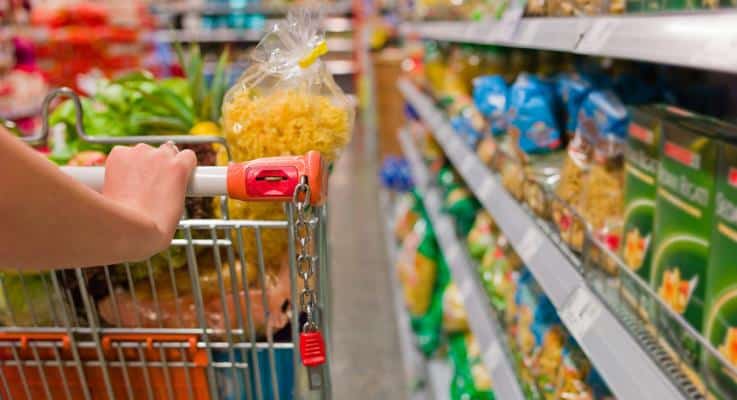Rising labour costs, climate change fueling food prices
Food prices in Cyprus have risen by 20 per cent since the end of 2019, the mildest increase in the euro area, while Estonia has seen the steepest jump at 57 per cent, according to the European Central Bank (ECB).
Although overall inflation in the bloc has eased to 2 per cent from a peak of 10.6 per cent in October 2022, food inflation remains more persistent.
In August it stood at 3.2 per cent, the highest among the main consumer price categories. As a result, shoppers are now paying about a third more for groceries than before the pandemic, the ECB noted.
The surge, it explained, came in stages. Russia’s invasion of Ukraine sent energy and fertiliser costs sharply higher in 2021–23, fuelling food inflation across the euro area and hitting the Baltic states especially hard.
More recently, rising labour costs and climate-linked supply disruptions have kept prices elevated. Droughts in southern Spain pushed olive oil to record levels, while poor harvests in Ghana and Côte d’Ivoire lifted the cost of cocoa and chocolate.
The impact has been uneven across supermarket shelves. Meat is more than 30 per cent more expensive than in 2019, milk around 40 per cent and butter close to 50 per cent.
Coffee, cocoa, chocolate and olive oil have climbed even higher, according to Eurostat figures cited in the blog.
Because food accounts for around 20 per cent of the euro area’s consumer price index — more than twice the share of energy, these increases are felt immediately.
According to the ECB, one in three consumers worry about affording the food they want. Lower-income households are hit hardest, as essentials make up a larger share of their budgets, raising the risk of so-called second-round effects if wage demands rise in response.
Cyprus, with a cumulative increase of 20 per cent since 2019, sits at the bottom of the range, while Estonia tops it at 57 per cent.
Other large economies fall in between: Italy has recorded increases in the high-20s, Germany in the high-30s, while Greece and Spain are closer to the euro area average.
More recent monthly data reinforce the gap: food and non-alcoholic beverages fell by 2.0 per cent year-on-year in Cyprus in July, whereas Greece and Spain both reported rises of about 2.2–2.3 per cent in August, and Italy saw a stronger 4.1 per cent increase in July.
The ECB economists warned that beyond short-term shocks, structural forces are also at play. Rising global demand, weak productivity in agriculture and the growing impact of climate change are expected to continue shaping food inflation.
This, they said, makes it increasingly difficult to separate temporary swings from longer-term pressures, complicating the task of monetary policy.







Click here to change your cookie preferences